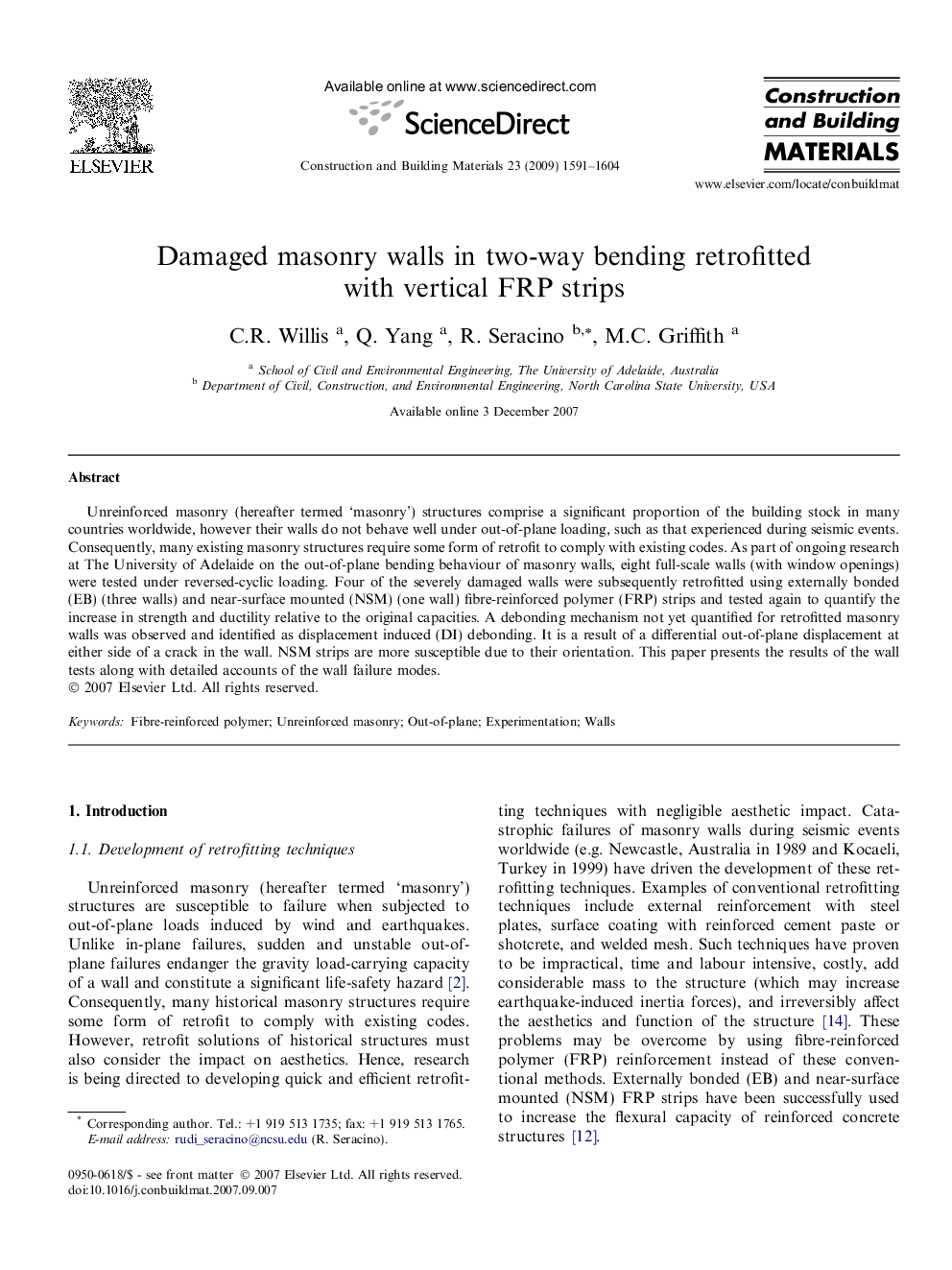| Article ID | Journal | Published Year | Pages | File Type |
|---|---|---|---|---|
| 260472 | Construction and Building Materials | 2009 | 14 Pages |
Unreinforced masonry (hereafter termed ‘masonry’) structures comprise a significant proportion of the building stock in many countries worldwide, however their walls do not behave well under out-of-plane loading, such as that experienced during seismic events. Consequently, many existing masonry structures require some form of retrofit to comply with existing codes. As part of ongoing research at The University of Adelaide on the out-of-plane bending behaviour of masonry walls, eight full-scale walls (with window openings) were tested under reversed-cyclic loading. Four of the severely damaged walls were subsequently retrofitted using externally bonded (EB) (three walls) and near-surface mounted (NSM) (one wall) fibre-reinforced polymer (FRP) strips and tested again to quantify the increase in strength and ductility relative to the original capacities. A debonding mechanism not yet quantified for retrofitted masonry walls was observed and identified as displacement induced (DI) debonding. It is a result of a differential out-of-plane displacement at either side of a crack in the wall. NSM strips are more susceptible due to their orientation. This paper presents the results of the wall tests along with detailed accounts of the wall failure modes.
